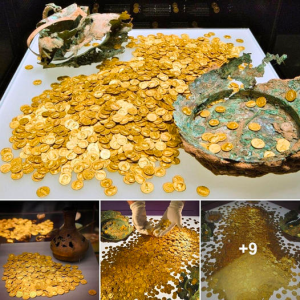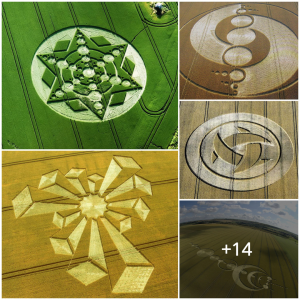Watermelon Wonders: Stunning Artistry Unveiled in Melon Masterpieces
Watermelon, with its vibrant red flesh and contrasting green rind, offers more than just a refreshing summer treat; it serves as an exquisite canvas for artistic expression. This article delves into the mesmerizing world of watermelon art, showcasing how this humble fruit transcends its culinary boundaries to become a medium for extraordinary artistic creations.
The practice of fruit carving has roots that trace back centuries, with early records indicating its presence in ancient Eastern cultures. It was not just an art form, but also a symbol of status and cultural significance, often used in royal banquets and religious ceremonies. Today, watermelon carving continues to be a respected and evolving art form, celebrated both for its aesthetic beauty and the skill it demands.
In exploring watermelon art, this article aims to highlight the intricacies and creativity of this unique craft. We will look at the techniques artists use, the cultural significance behind this form of art, and how modern innovations have propelled it into a new era of popularity and appreciation.
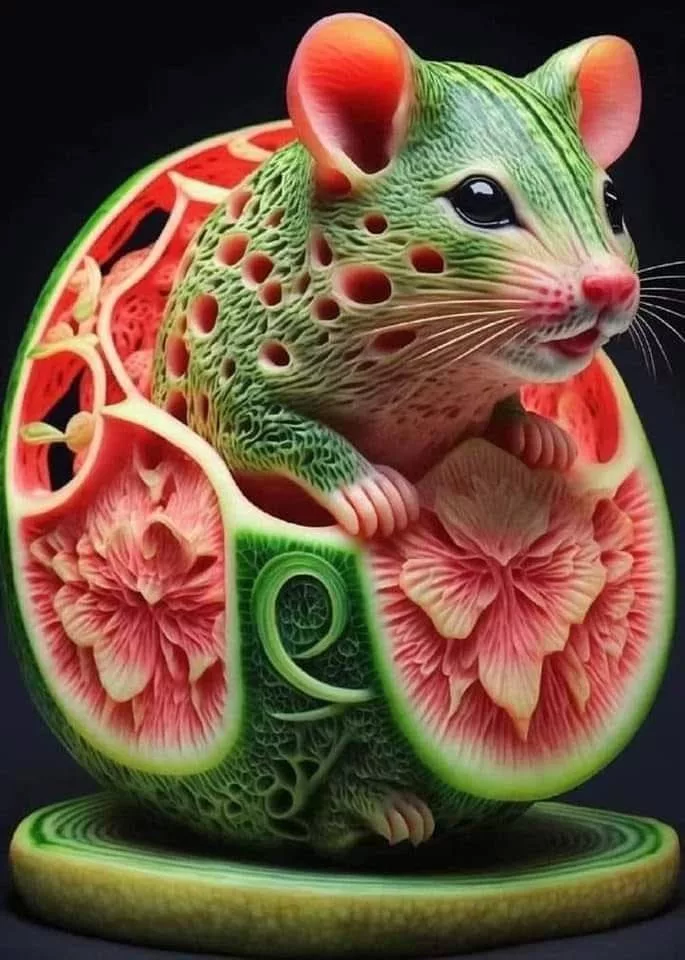
The Art of Watermelon Carving
Techniques and Tools
Watermelon carving is a delicate process that requires both precision and imagination. Artists typically use a range of tools, from standard kitchen knives and melon ballers to specialized carving tools designed for intricate detailing. The key is in the careful control of these tools to sculpt the watermelon’s flesh without breaking its delicate surface.
Selecting the Right Watermelon
The perfect canvas is crucial. Carvers often look for watermelons with a symmetrical shape, a firm rind, and no bruises or soft spots. The ideal watermelon should be ripe but not overly so, as a firmer texture allows for more detailed and durable carvings.
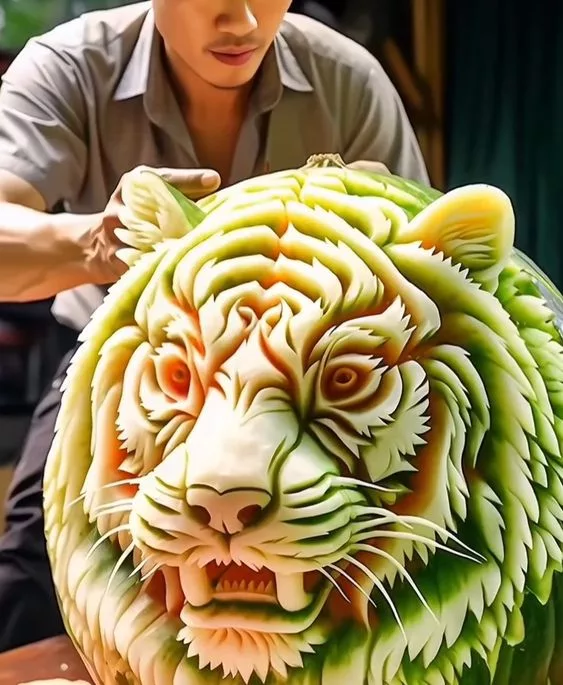
Basic Watermelon Carving Steps
- Planning the Design: Artists begin with a concept, often sketching their designs beforehand. This plan serves as a guide throughout the carving process.
- Preparing the Watermelon: The watermelon is washed, dried, and sometimes hollowed out. Some artists prefer to leave the watermelon whole for structural integrity, especially for more complex designs.
- Outlining the Design: The design is gently etched onto the rind. This stage requires a steady hand and a keen eye for detail.
- Carving the Design: Using their tools, the artist carefully cuts along the outline. This involves removing layers of the rind to create contrast and depth, exploiting the natural colors of the watermelon for effect.
- Detailing and Finishing Touches: The final stage involves refining the details and adding finishing touches. This could include smoothing edges, creating textures, or adding additional elements with other fruits or decorative items.
Each step in this process is a testament to the skill and patience required in watermelon carving. The resulting works of art are not only visually stunning but also embody the dedication and creativity of the artists behind them. This section has provided a glimpse into the technical side of watermelon carving, setting the stage for further exploration of its artistic and cultural dimensions in the subsequent sections of the article.
Cultural Significance of Watermelon Carving
Watermelon carving, while a form of artistic expression, is deeply rooted in cultural traditions across the world. This section explores the cultural significance of this art form and how it varies across different regions.
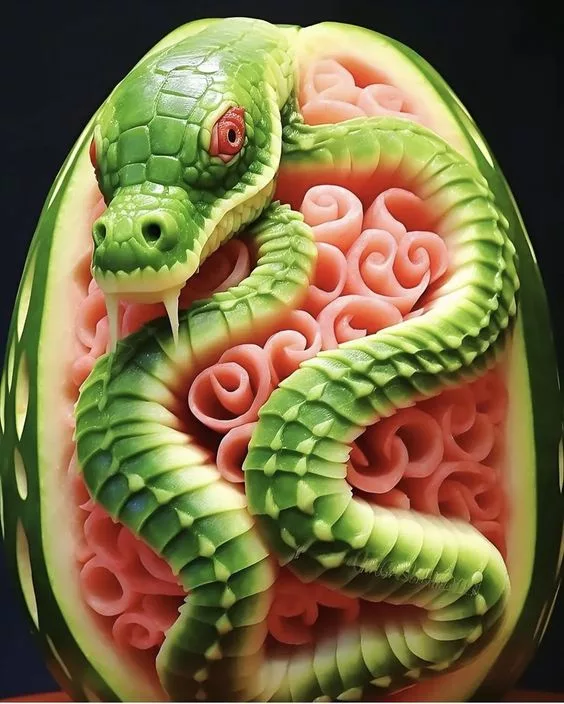
Role in Different Cultures
In many Eastern cultures, watermelon carving is a revered art form, often associated with important events and celebrations. These carvings are not merely decorative; they carry symbolic meanings, often tied to wishes for prosperity, health, and good fortune.
In Western cultures, watermelon carving has gained popularity as a form of culinary art, often seen in buffets and at social gatherings. While it may not hold the same traditional significance, it is appreciated for its aesthetic appeal and the skill involved in its creation.
Watermelon Art in Celebrations and Festivals
- In some Asian countries, watermelon carvings are a staple in festivals and weddings, embodying wishes for good luck and happiness.
- In the United States, watermelon carvings are often featured in summer parties and Independence Day celebrations, symbolizing the joy and freshness of the season.
Evolution of Styles
The evolution of watermelon carving styles reflects the blending of cultural influences. Traditional carvings focused on symmetrical patterns and religious symbols, while contemporary styles incorporate a broader range of themes, including pop culture references and personal narratives.
The diversity and adaptability of watermelon carving make it a unique art form, rich in cultural heritage and continually evolving through the hands of skilled artists. This blend of tradition and innovation is what makes watermelon carving a truly global and timeless form of artistic expression.
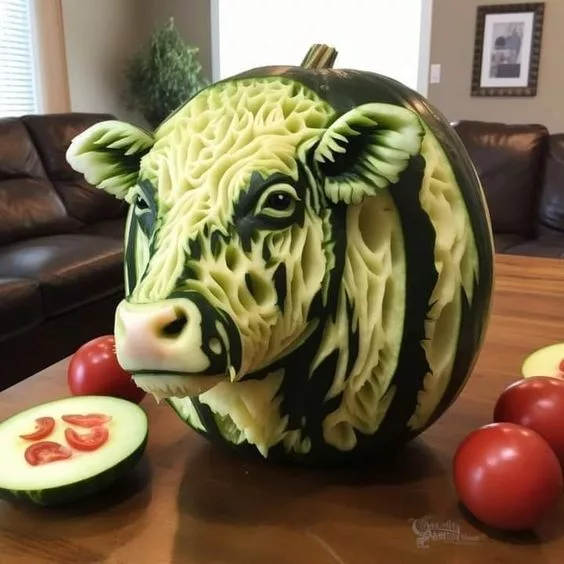
Modern Trends and Innovations
Watermelon carving, like many traditional art forms, has not remained static. It continues to evolve, influenced by modern trends and technological advancements. This section examines how these influences are shaping the future of watermelon art.
Technological Influence
- Digital Design and Planning: Artists are increasingly turning to digital tools for planning and visualizing their designs. Software like 3D modeling programs allows for intricate and precise designs that were once difficult to conceptualize.
- Social Media and Global Exposure: Platforms like Instagram, YouTube, and Pinterest have played a pivotal role in popularizing watermelon carving. Artists share their creations online, reaching a global audience and inspiring a community of enthusiasts.
- Innovative Carving Tools: The development of new carving tools, some powered by electricity, has made the art form more accessible. These tools offer greater precision and control, allowing for more complex and detailed designs.
Fusion of Styles
Contemporary watermelon carvers often blend traditional techniques with modern artistic trends. This fusion results in unique pieces that reflect both the carver’s cultural heritage and their personal artistic vision. The integration of styles from different art movements, such as realism, abstract, or even pop art, into watermelon carving illustrates the dynamic nature of this art form.
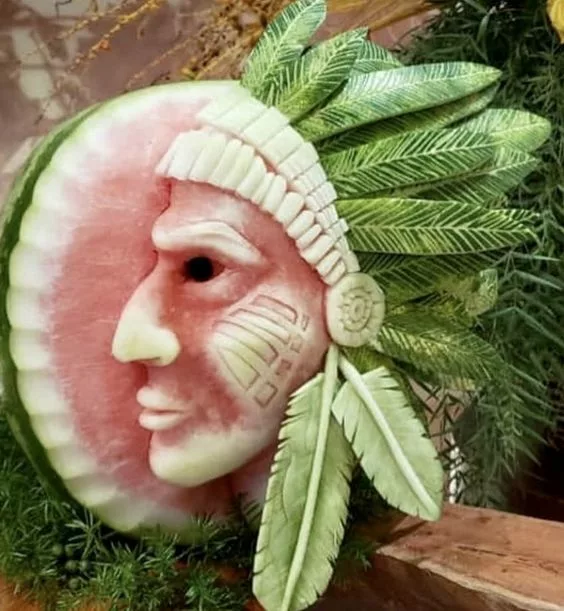
Growing Popularity
The appeal of watermelon carving has grown beyond cultural festivals and private events. It is now a feature at corporate events, public exhibitions, and even competitive carving events. This increased visibility has contributed to a broader appreciation and understanding of the art form.
Challenges and Sustainability
Despite its growing popularity, watermelon carving faces its unique set of challenges, particularly concerning sustainability and the perishable nature of the medium.
Challenges Faced by Artists
- Perishability: The biggest challenge is the transient nature of the art. Watermelon carvings, being made from a perishable fruit, have a very limited lifespan. This aspect poses challenges in terms of preservation and display.
- Skill and Precision: The level of skill and precision required for watermelon carving can be a barrier for beginners. It demands patience and practice, and there is little room for error.
- Cultural and Artistic Recognition: While gaining popularity, watermelon carving is still often viewed more as a culinary skill than an art form, affecting its recognition in the broader artistic community.
Sustainability Practices
- Utilizing the Whole Fruit: Many artists ensure that the unused parts of the watermelon are not wasted. This can include using the flesh for consumption or composting the remnants.
- Eco-Friendly Carving Tools: There is a growing trend towards using sustainable, reusable carving tools and avoiding single-use plastics.
- Promoting Local and Seasonal Use: Encouraging the use of locally-sourced and in-season watermelons also contributes to the sustainability of this art form.
Watermelon carving, while a delightful and visually appealing art, comes with its unique challenges. Addressing these issues, particularly around sustainability and recognition, is crucial for its future growth and acceptance as a legitimate form of artistic expression. This section not only highlights these challenges but also underscores the efforts made by artists and communities to ensure the art form is both appreciated and sustainable.
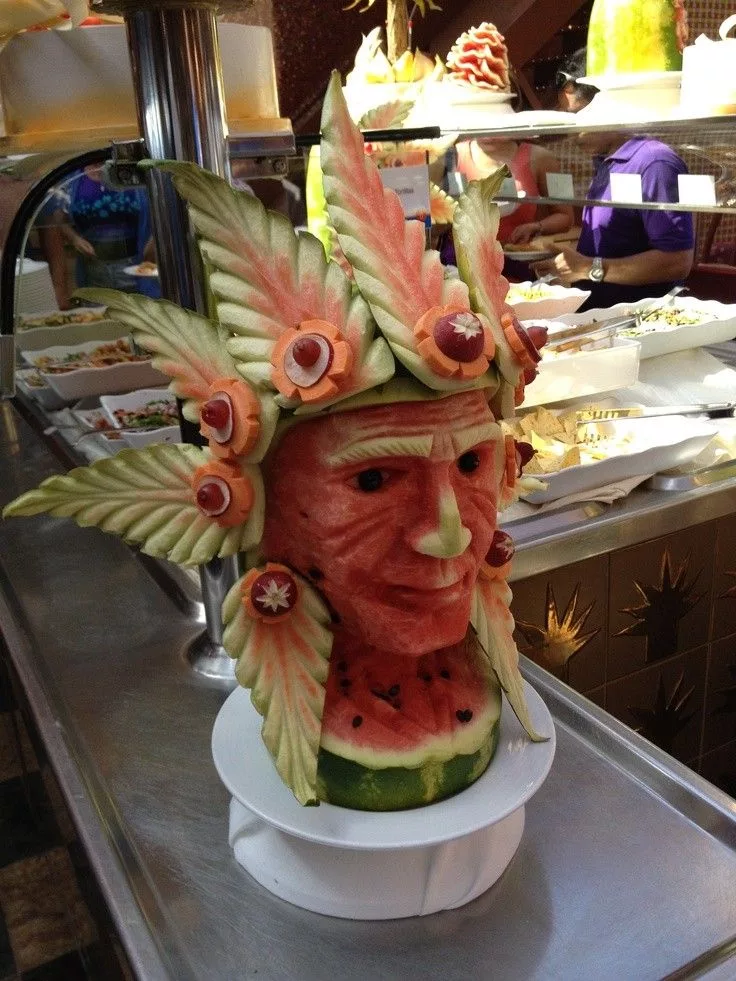
Workshops and Learning Resources
As watermelon carving continues to captivate audiences worldwide, there is a growing interest in learning this unique art form. This section provides insights into the resources available for aspiring carvers and tips from experts in the field.
Workshops and Online Courses
- Local Workshops: Many communities offer workshops led by experienced carvers. These hands-on sessions are ideal for beginners, providing a foundation in basic techniques and tool handling.
- Online Tutorials and Courses: With the rise of digital learning, numerous online platforms offer courses ranging from beginner to advanced levels. These courses often include video tutorials, allowing learners to pace themselves and practice in their own time.
- Cultural Exchange Programs: Some programs offer the opportunity to learn watermelon carving in countries where it is a traditional art form, providing an immersive cultural experience.
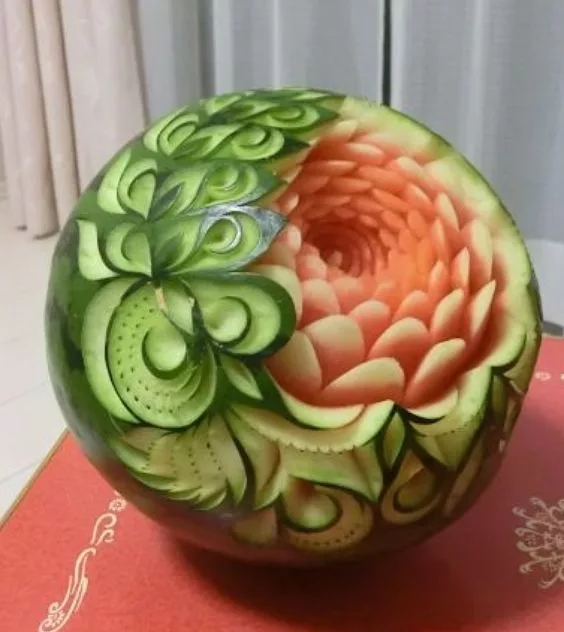
Recommended Tools and Resources
- Starter Kits: Beginners are advised to start with basic carving sets, which typically include a variety of knives and scoops. As skills develop, more specialized tools can be added to the carver’s toolkit.
- Reference Books and Guides: Books on fruit carving provide step-by-step instructions and design ideas. They can be a valuable resource for both beginners and experienced carvers.
- Online Communities and Forums: Online platforms where carvers share their work and tips are invaluable for learning and staying inspired.




